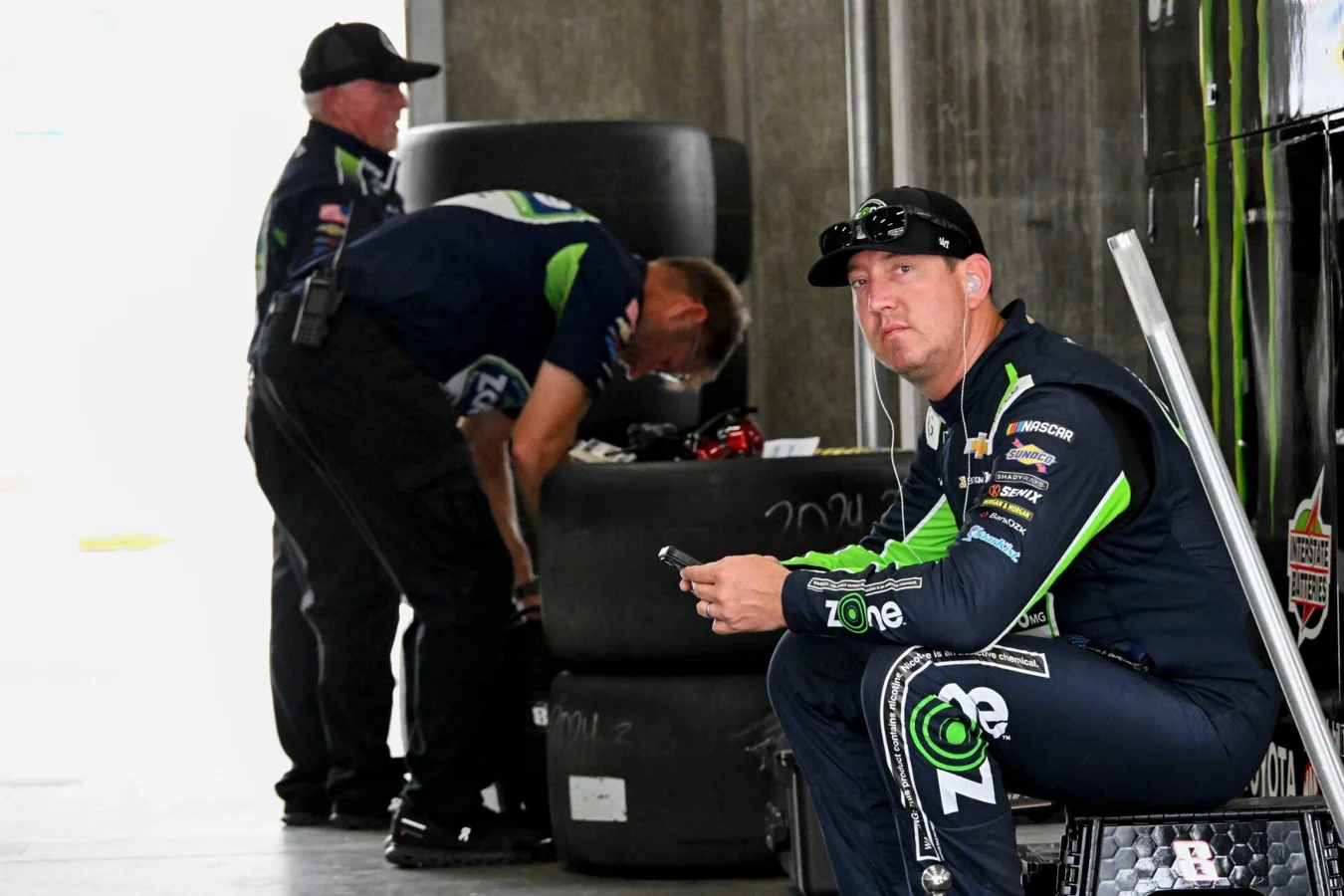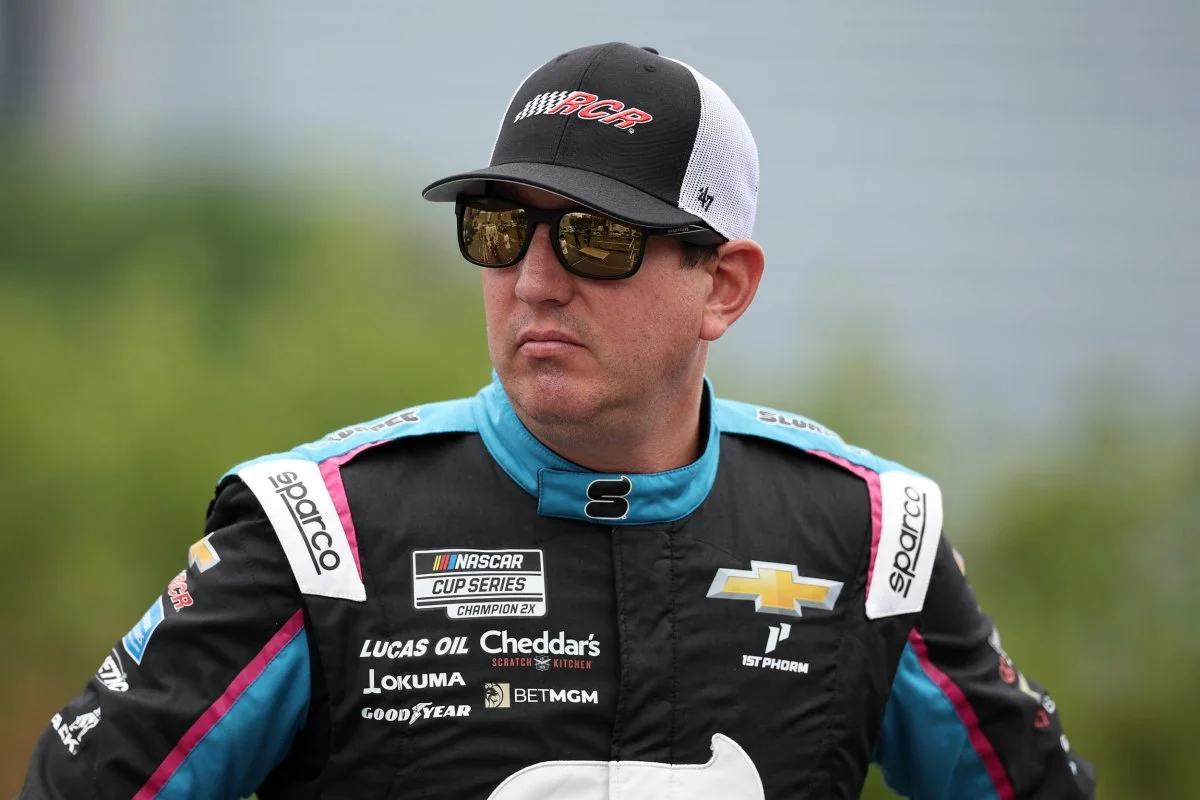Kyle Busch, a celebrated driver with two NASCAR Cup Series championships, recently opened up about the toughest race of his career, describing his most harrowing moment behind the wheel. Sharing his account nearly twenty-three years after the event, Busch recounted his ordeal in Pensacola, Florida, an experience that stands out as his worst NASCAR race experience.
Kyle Busch Remembers Racing in Extreme Heat
During his discussion, Busch explained that back in 2002, he faced brutally high temperatures while competing on the track in Pensacola. The event, held in June or July, saw outside temperatures hit 100 degrees, matched by relentless humidity. Even for a seasoned competitor like Busch, the severe climate made the race exceptionally difficult to endure.
He emphasized that racing conditions were particularly harsh at the time, given the technology and car designs. Aluminum engines and blocks led to increased internal heat, and limited grille openings meant cooling systems struggled under the strain. The engines could reach water temperatures around 230 degrees, and the exhaust headers ran over the top of the engine, releasing even more heat along the driver’s right side.
“Back in that day, those cars had aluminum engines, aluminum blocks and all that stuff. So they just run hotter, and they don’t have very big grille openings. You’re probably running 230 degrees of water temp in those cars. They have over-the-top headers, which means they come over the back of the top of the engine and down your right side – so everything is hotter about those cars.”
—Kyle Busch, NASCAR driver
Attempts at Cooling Fall Short
Seeking relief, Busch and his team decided to invest in an air conditioning solution known as the Cool Boxx 2, mounting it under the seat and connecting it to his helmet through a hose. However, the oppressive heat proved too strong, and the device only managed to blow hot air across his face instead of providing the cool comfort he desperately needed.

During a pit stop, Busch tried a creative fix by asking his crew for a bag of ice, hoping to cool the finned radiator section in the cooling unit. Intended to lower the temperature of the AC system, this improvisation ended up having the opposite effect. The ice caused the entire circuit to shut down early in the race—specifically around Lap 80—leaving more than 200 laps to complete in extreme conditions without any cooling.
Endurance Tested as Competitors Struggle
As the event wore on, the heat overwhelmed many drivers on the track. Busch described how competitors began to succumb, with several pulling off course, getting out of their cars, or even collapsing due to exhaustion and dizziness triggered by the relentless conditions.
“Guys were falling out of the seat. They were just pulling over and stopping and getting out because they couldn’t do it anymore. There were guys who were dizzy, fainting – all that stuff.”
—Kyle Busch, NASCAR driver
Despite the adversity, Busch pressed on to finish the race, managing to secure a spot within the top ten. The physical and mental toll of the environment, coupled with the lack of relief inside the car, left a lasting memory of hardship that has remained vivid for Busch over the decades.
A Lasting Impression on Kyle Busch’s Career
Recollecting his achievement, Busch expressed little joy about just surviving the ordeal but underscored how truly miserable the day had been. Still, completing the race in such trying circumstances became a testament to his resolve and endurance as a NASCAR Cup Series athlete.
“I made it. I made it to the finish. I think we ran top 10 somewhere. But that was the most miserable I’ve ever been in a car.”
—Kyle Busch, NASCAR driver
The racing community remembers moments like these as reminders of the grueling realities drivers face, particularly in events marked by hazardous weather and technical challenges. For Kyle Busch, this particular Pensacola race remains a defining example of the toughest side of professional motorsports—a story shared not just as a personal milestone but as a cautionary note for current and future drivers about the limits of endurance in unforgiving conditions.
The story also serves to highlight Busch’s career resilience and the extreme trials that even NASCAR champions experience in pursuit of greatness, reflecting upon what it takes to survive—and succeed—at the highest level of auto racing.
